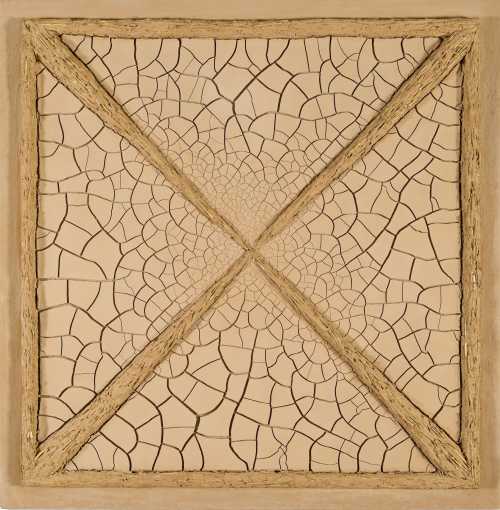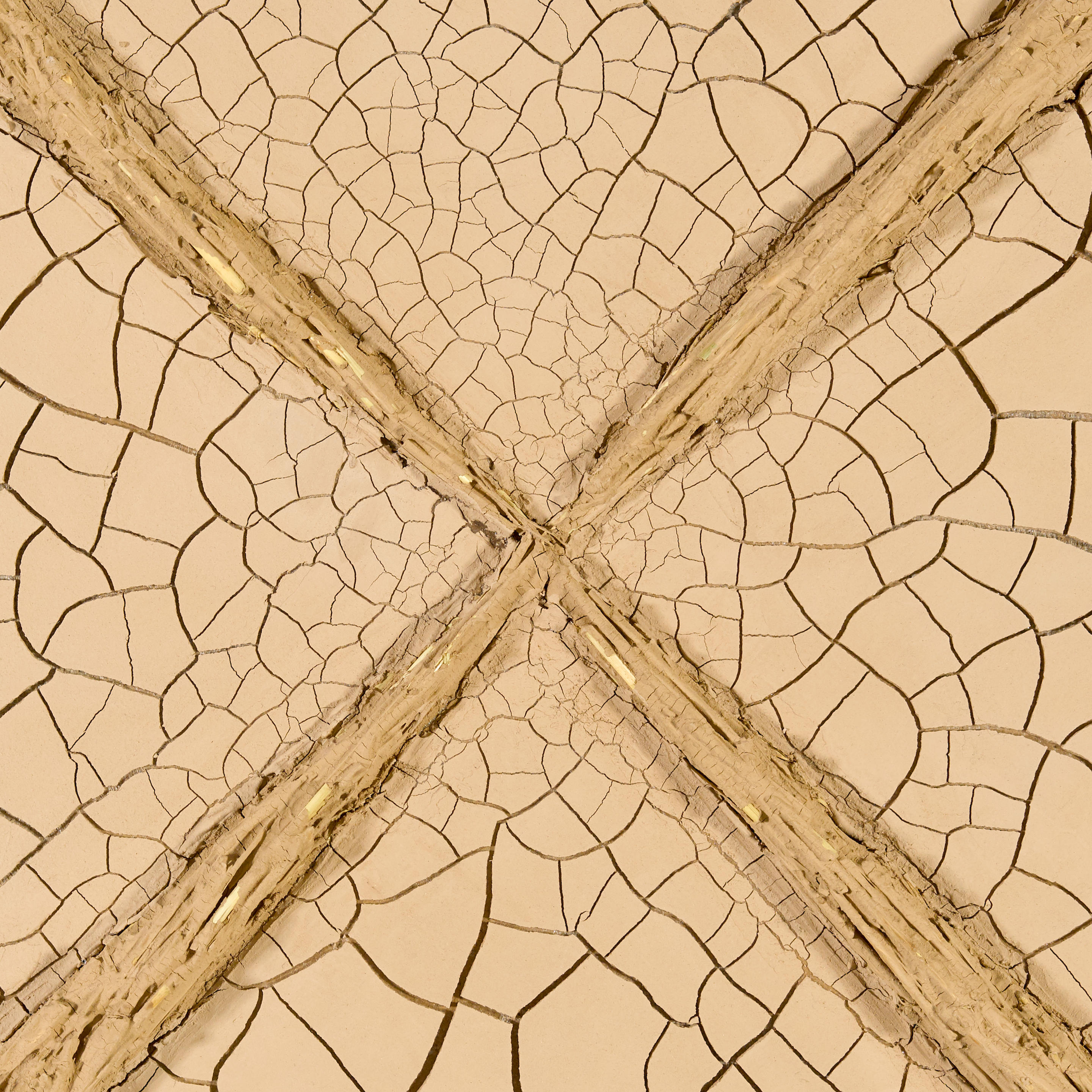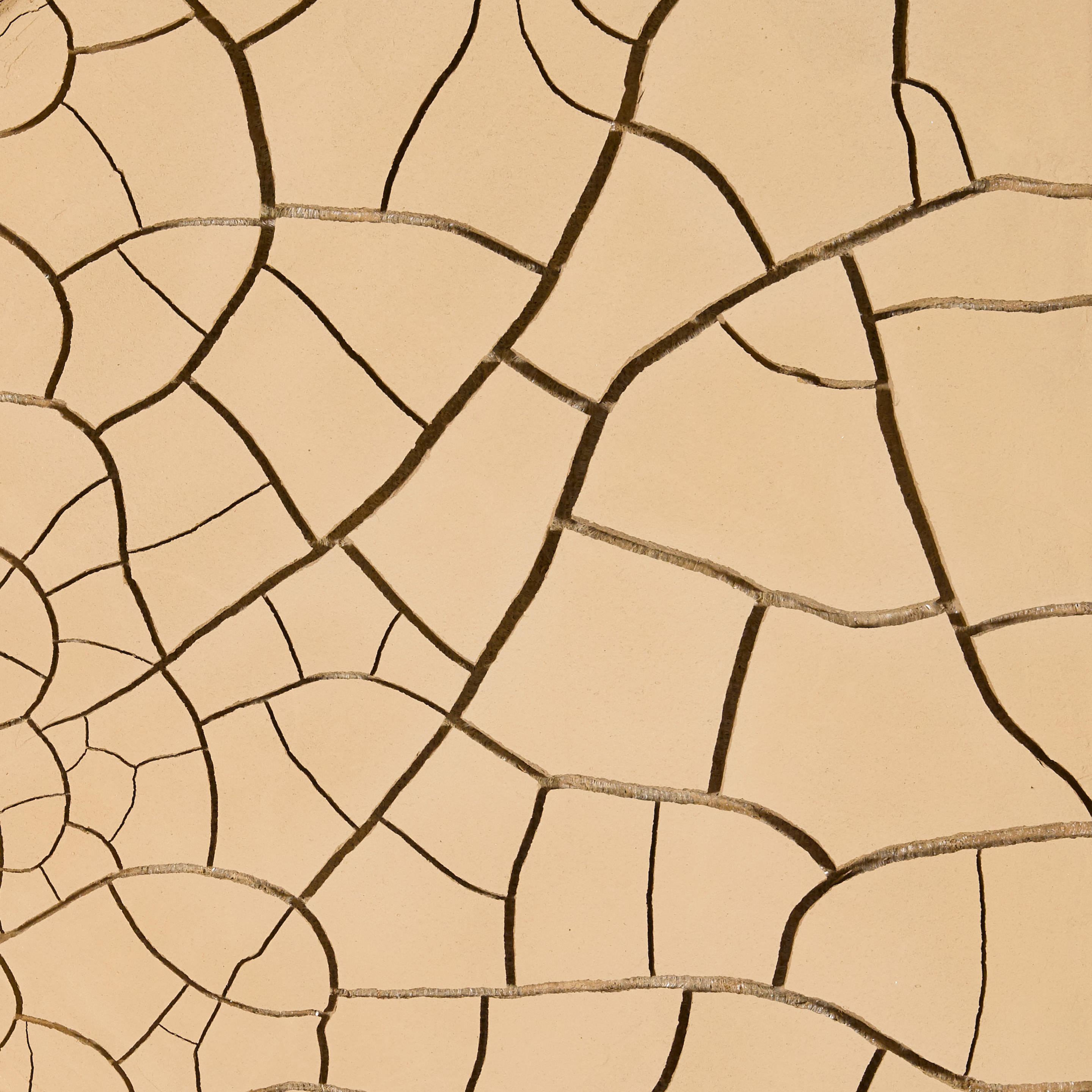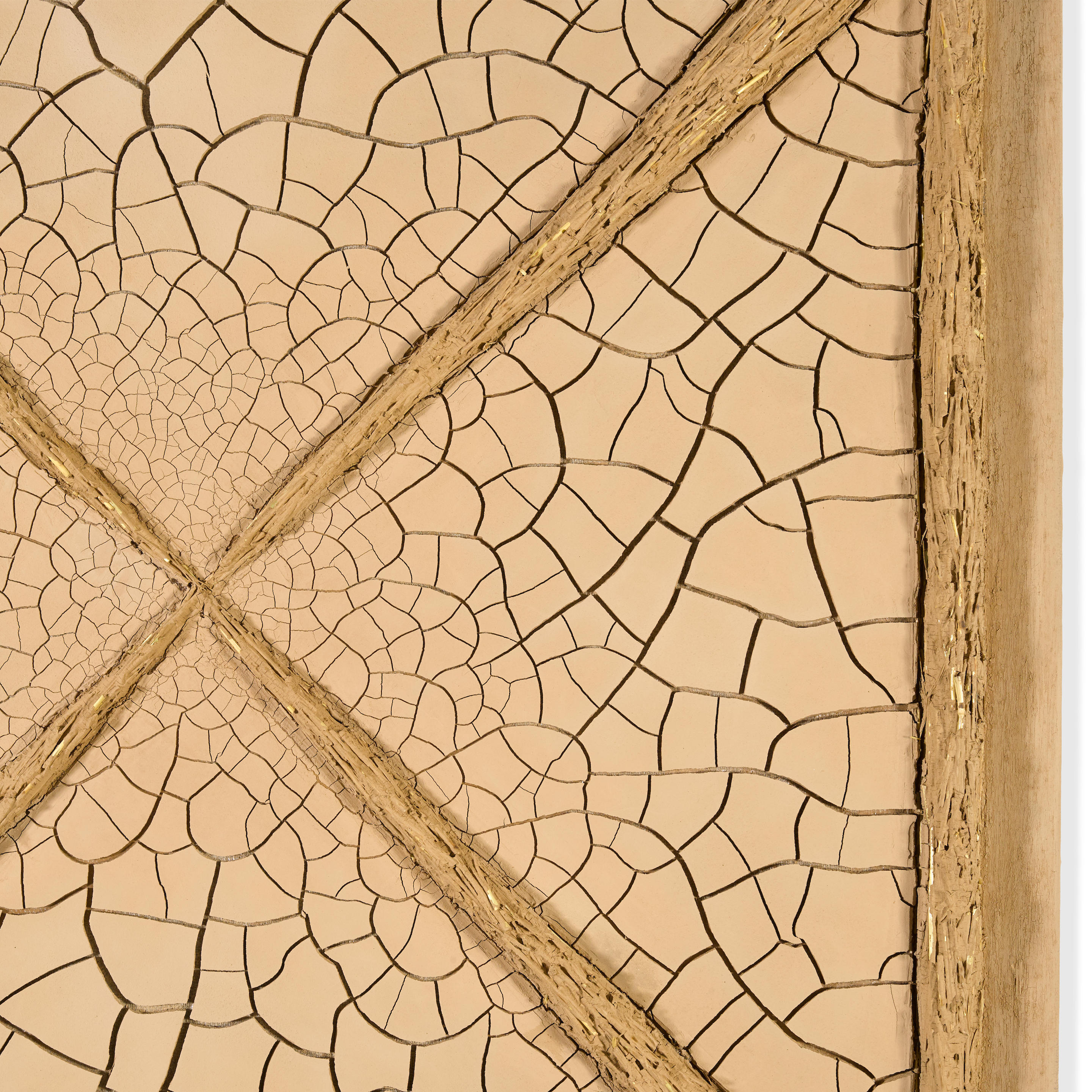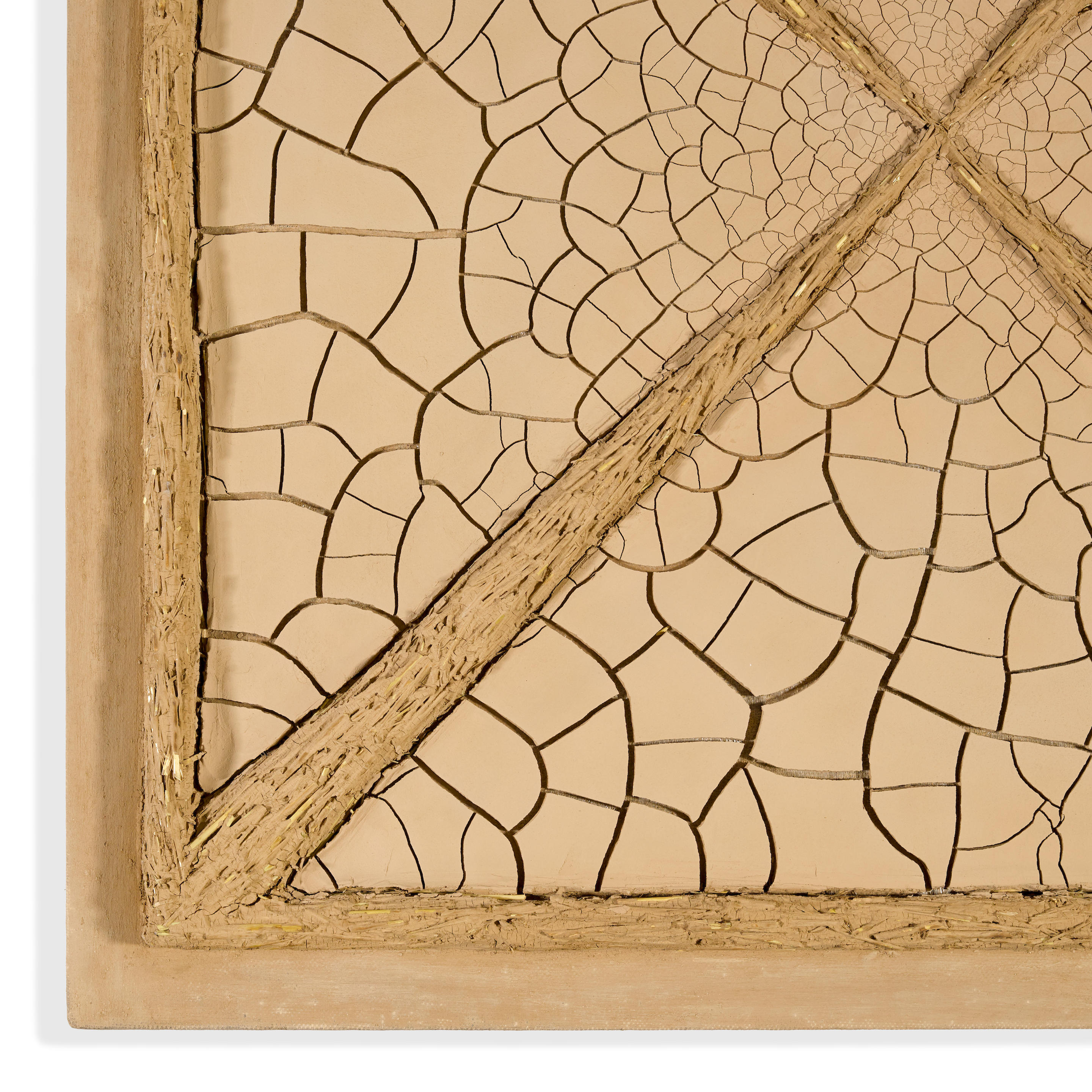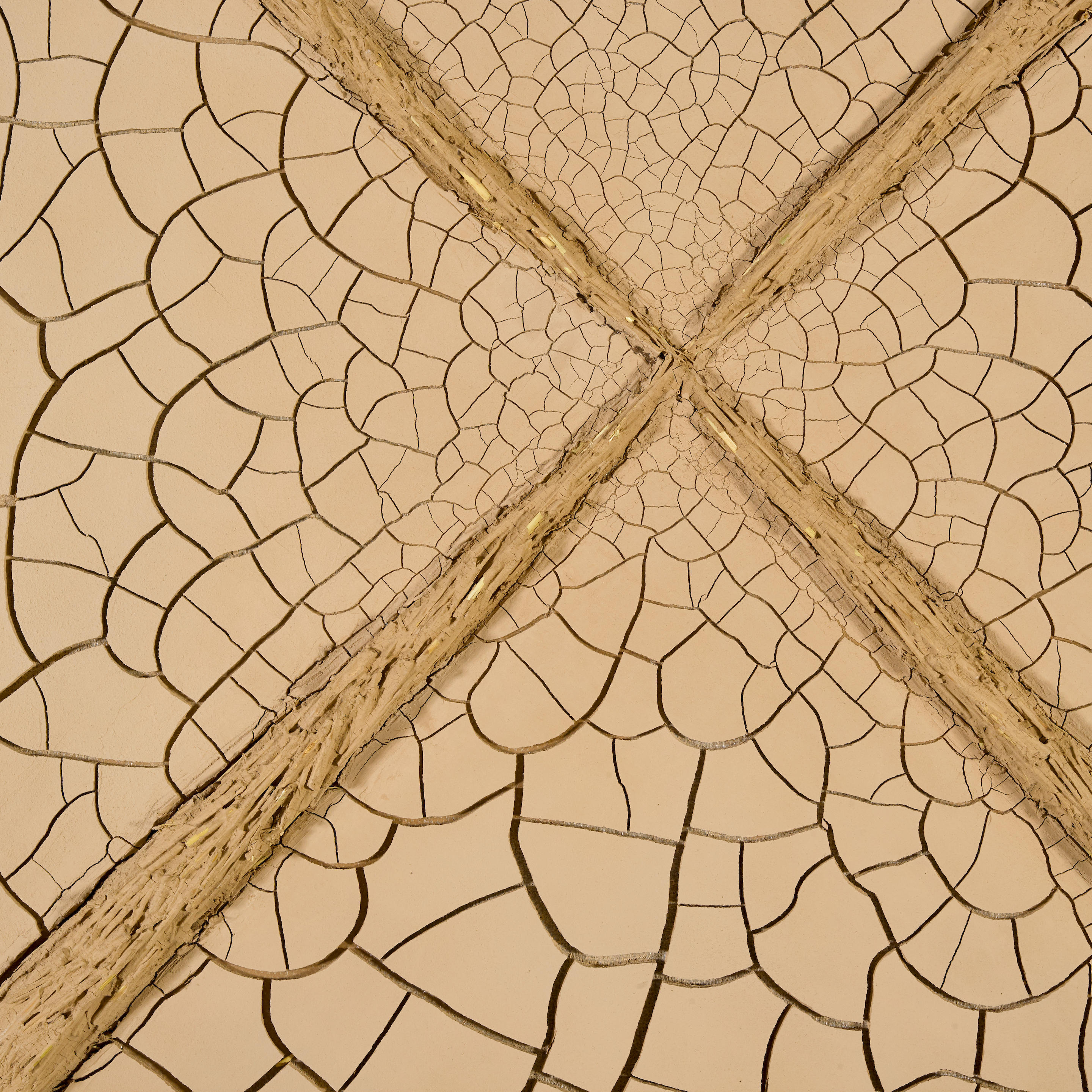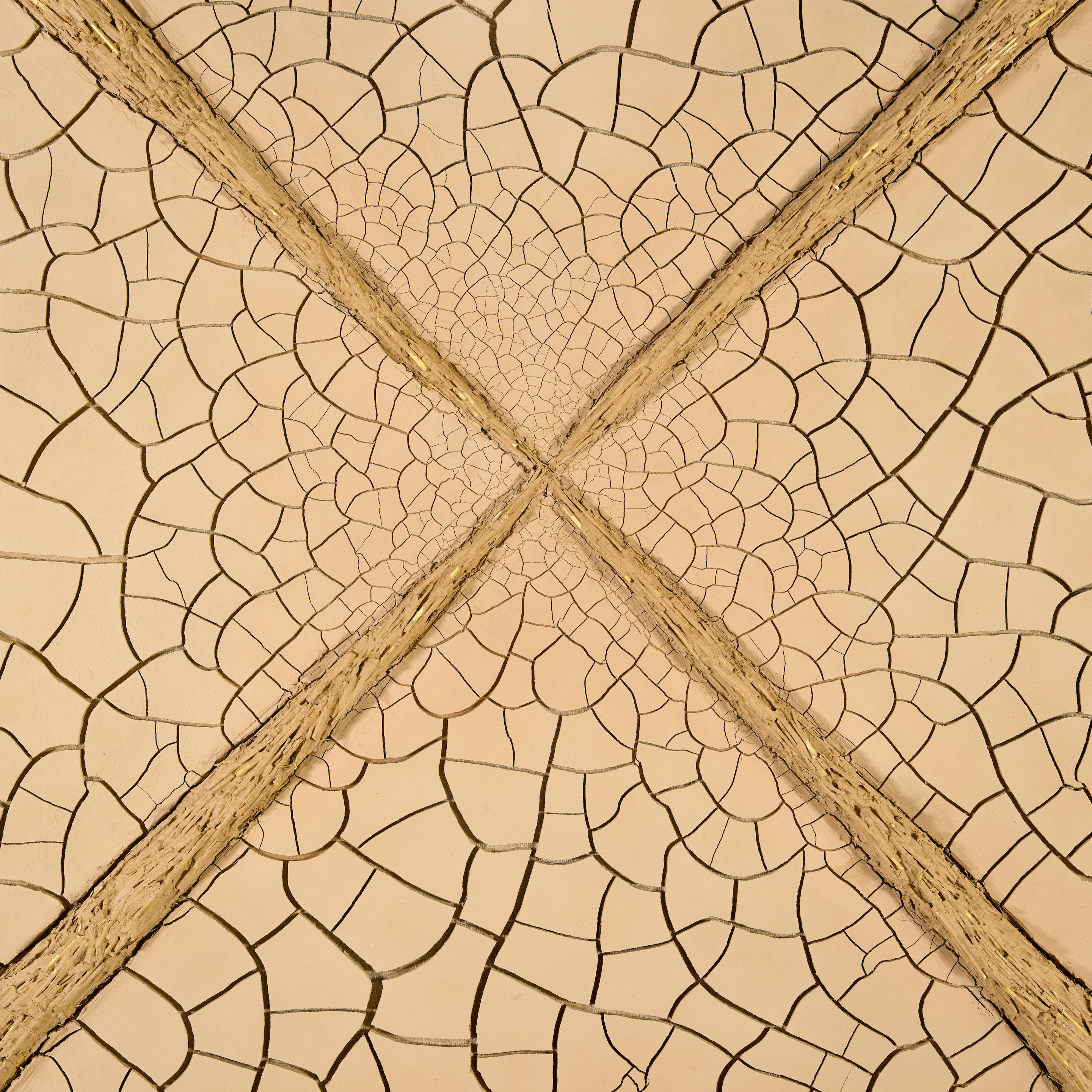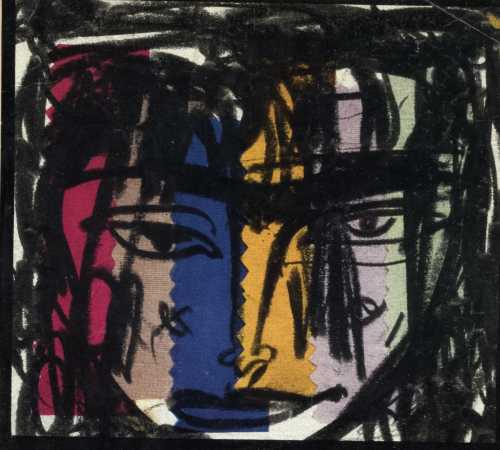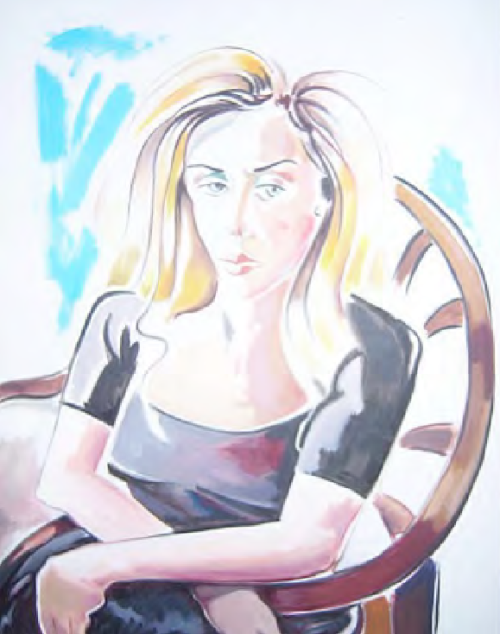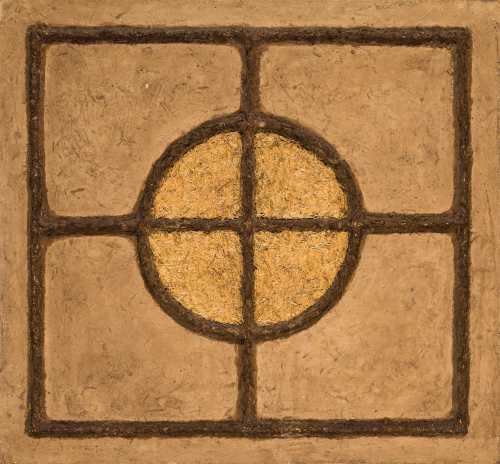- Convergence 1981
- Soil, resin, straw and mixed media on panel
- Collage & Assemblage
- 116 * 115 cm
- signed, titled and dated on the verso, executed in 1981
17 November 2021
Estimation
£35,000
48,243 USD
-
£50,000
68,918 USD
Realized Price
£94,000
129,566 USD
121.176%
Artwork Description
"Surely not in vain
My substance of the common Earth was taken
And to this Figure moulded... to be broke,
Or trampled back to shapeless Earth again?"
- Omar Khayyam
'Perhaps I was homesick for the native soil of Iran, or maybe it was just the opposite – a reaction to being obsessed with my past' - Marcos Grigorian
Bonhams is delighted to present this superlative group of works by pioneering Iranian Armenian artist Marcos Grigorian. Ranging from one of the most monumental, exquisitely rendered, and technically complex examples of his signature Earthworks, to rare painted compositions formerly in the collection of the artists uncle and gallery-owner, the present grouping provides a comprehensive and compelling accounts of Grigorian's oeuvre.
"Convergence" is part of Grigorian's acclaimed Earthworks Series. Earthworks were inspired by the use of materials and forms that went beyond the conventional means of art-making. Compared to the Western Land Artists, who similarly created compositions through the handling of earth itself, Grigorian predated this movement by a decade.
Born to Armenian parents in 1925, Grigorian was brought up in Russia for a short time before emigrating to Iran with his family at the age of five. After studying at Kamal-el-Molk Art School in Tehran, he moved to Rome to complete his studies at the Academia di Bella Arti in the 1950s. His move to Rome allowed him to study the works of classical and modern masters and was a turning point in his career. His subsequent moves to Iran and then to the United States in the later years of his career were to be equally influential to his artistic development. His early abstract style was supplanted by expressionist figurative compositions on his return to Iran in 1954. In 1962 he moved to New York where he began his most famous Earthworks Series.
These works are mostly on a square format, which became something of a signature for Grigorian. The square form was a representation of sacred geometry and harmonious proportions. The organic materials such as hay, straw, sand, soil and clay which he used to create his almost three-dimensional compositions were to be equally defining.
In experimenting with soil and mud, he believed he was rebuilding life and exploring the complex relationship between mankind and earth. The present work is reminiscent of the commonly held theory that the Earth and the other planets developed over millions of years out of particles and gas. The traces of a convergent movement towards the centre of the canvas evoke the image of the universe forming out of primordial dust - and the monochrome earthy surface impress upon the viewer the feeling of a distant aerial view from space. The textured surface and the play between light and shadow endow the painting with an even more dramatic effect, adding to its three-dimensionality.
In 1965, The Museum of Modern Art, New York acquired a work from Grigorian's Earthworks Series on the recommendation of Alfred H. Barr Jr., the legendary former director of the museum. A second work was then donated to the museum by Nelson Rockefeller in 1978. Further examples of Grigorian's works were recently acquired by the Metropolitan Museum of Art in New York and can also be found in the collections of Tehran's Museum of Contemporary Art and the National Gallery of Armenia in Yerevan.
Besides being a leading figure in avant-garde Iranian and Armenian art history, Grigorian was an artist, writer, gallerist, collector, pioneer and a teacher. From his Gallery Esthétique in 1950s Tehran, which provided a free exhibition space for younger artists, to his pioneering decision to organise the first national Tehran Biennial in 1958 (after he was awarded the honour of representing Iran in the 1956 Venice Biennial) Grigorian desired to make an impact on the development of art.
He was instrumental in the introduction and promotion of modern art in Iran in the 1950s and extensively promoted the works of Armenian artists in the United States in the 1980s. Despite travelling around the world, Grigorian chose to return to his ancestral home of Armenia for the remainder of his life and donated his complete collection to the Armenian government as a sign of his lifelong commitment to his nation.
My substance of the common Earth was taken
And to this Figure moulded... to be broke,
Or trampled back to shapeless Earth again?"
- Omar Khayyam
'Perhaps I was homesick for the native soil of Iran, or maybe it was just the opposite – a reaction to being obsessed with my past' - Marcos Grigorian
Bonhams is delighted to present this superlative group of works by pioneering Iranian Armenian artist Marcos Grigorian. Ranging from one of the most monumental, exquisitely rendered, and technically complex examples of his signature Earthworks, to rare painted compositions formerly in the collection of the artists uncle and gallery-owner, the present grouping provides a comprehensive and compelling accounts of Grigorian's oeuvre.
"Convergence" is part of Grigorian's acclaimed Earthworks Series. Earthworks were inspired by the use of materials and forms that went beyond the conventional means of art-making. Compared to the Western Land Artists, who similarly created compositions through the handling of earth itself, Grigorian predated this movement by a decade.
Born to Armenian parents in 1925, Grigorian was brought up in Russia for a short time before emigrating to Iran with his family at the age of five. After studying at Kamal-el-Molk Art School in Tehran, he moved to Rome to complete his studies at the Academia di Bella Arti in the 1950s. His move to Rome allowed him to study the works of classical and modern masters and was a turning point in his career. His subsequent moves to Iran and then to the United States in the later years of his career were to be equally influential to his artistic development. His early abstract style was supplanted by expressionist figurative compositions on his return to Iran in 1954. In 1962 he moved to New York where he began his most famous Earthworks Series.
These works are mostly on a square format, which became something of a signature for Grigorian. The square form was a representation of sacred geometry and harmonious proportions. The organic materials such as hay, straw, sand, soil and clay which he used to create his almost three-dimensional compositions were to be equally defining.
In experimenting with soil and mud, he believed he was rebuilding life and exploring the complex relationship between mankind and earth. The present work is reminiscent of the commonly held theory that the Earth and the other planets developed over millions of years out of particles and gas. The traces of a convergent movement towards the centre of the canvas evoke the image of the universe forming out of primordial dust - and the monochrome earthy surface impress upon the viewer the feeling of a distant aerial view from space. The textured surface and the play between light and shadow endow the painting with an even more dramatic effect, adding to its three-dimensionality.
In 1965, The Museum of Modern Art, New York acquired a work from Grigorian's Earthworks Series on the recommendation of Alfred H. Barr Jr., the legendary former director of the museum. A second work was then donated to the museum by Nelson Rockefeller in 1978. Further examples of Grigorian's works were recently acquired by the Metropolitan Museum of Art in New York and can also be found in the collections of Tehran's Museum of Contemporary Art and the National Gallery of Armenia in Yerevan.
Besides being a leading figure in avant-garde Iranian and Armenian art history, Grigorian was an artist, writer, gallerist, collector, pioneer and a teacher. From his Gallery Esthétique in 1950s Tehran, which provided a free exhibition space for younger artists, to his pioneering decision to organise the first national Tehran Biennial in 1958 (after he was awarded the honour of representing Iran in the 1956 Venice Biennial) Grigorian desired to make an impact on the development of art.
He was instrumental in the introduction and promotion of modern art in Iran in the 1950s and extensively promoted the works of Armenian artists in the United States in the 1980s. Despite travelling around the world, Grigorian chose to return to his ancestral home of Armenia for the remainder of his life and donated his complete collection to the Armenian government as a sign of his lifelong commitment to his nation.
More lots by Marcos Grigorian
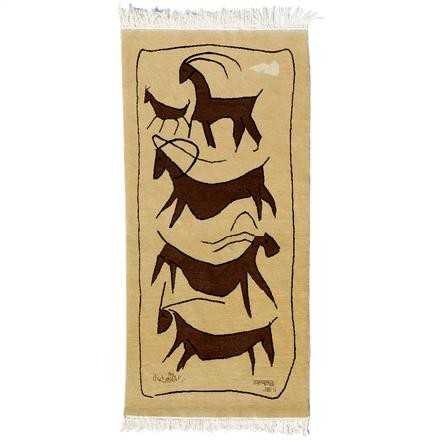
art rug
Realized Price
33,641 USD
Min Estimate
18,783 USD
Max Estimate
26,597 USD
Average Artwork Worth
+40.788%
Average Growth of Artwork Worth
Sales Performance Against Estimates
Average & Median Sold Lot Value
2021 - 2025
Performance vs. Estimate
2021 - 2025
Sell-through Rate
2021 - 2025
